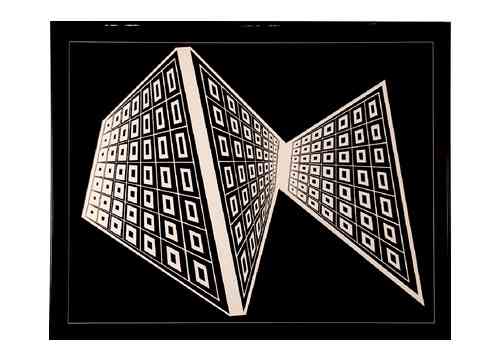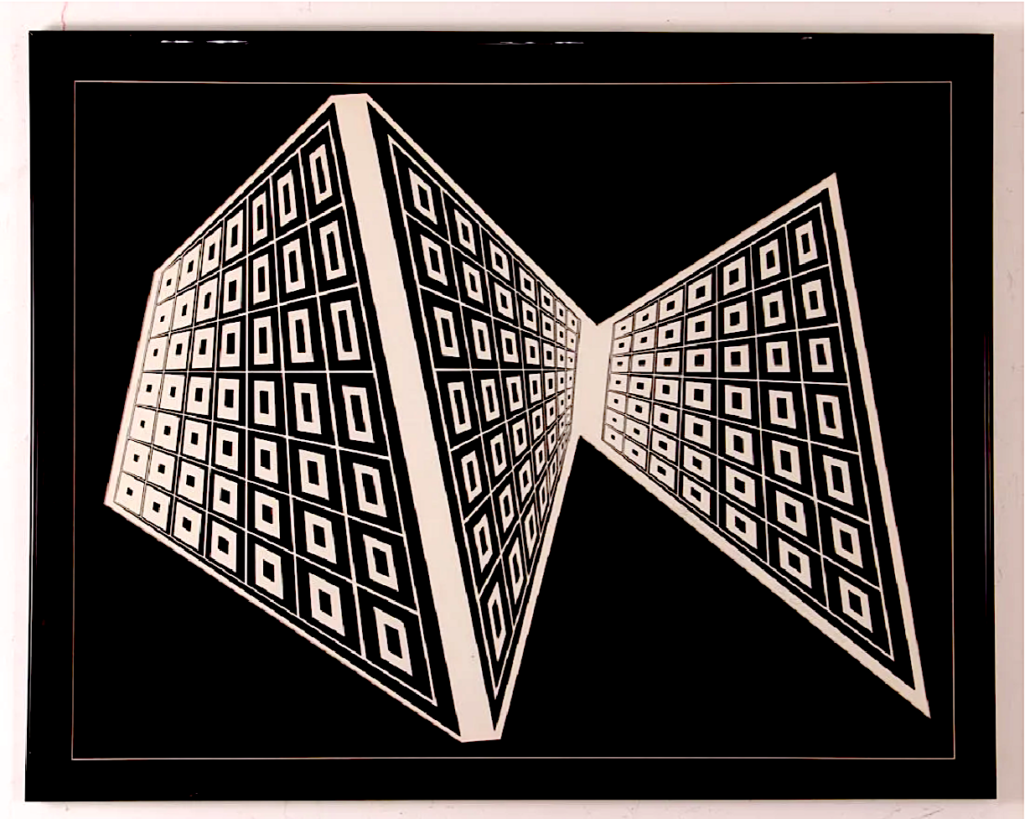
NEW YORK — Most artists, especially those trained in art schools, begin their careers with representational art rooted in realism. Some shift towards abstraction, but only after cutting their teeth on figurative and naturalistic works. Self-taught American painter Roy Ahlgren (1927-2011) found himself immediately attracted to the dramatic style of Op Art, which is short for optical art, a form that relies on and plays with optical illusions. He is known to have created about 1,000 artworks in this alluring style from 1965 to 2010.
Ahlgren came to art relatively late in life but created many striking Op Art artworks at the height of his career. He was in his forties and working for a toy company in his native Pennsylvania when he caught the Op Art bug in the 1960s. He became a partner in an art gallery and taught art at his old high school, accepting the job from his former teacher. Ahlgren spent two decades teaching art and making prints before retiring to pursue painting full time in 1990.
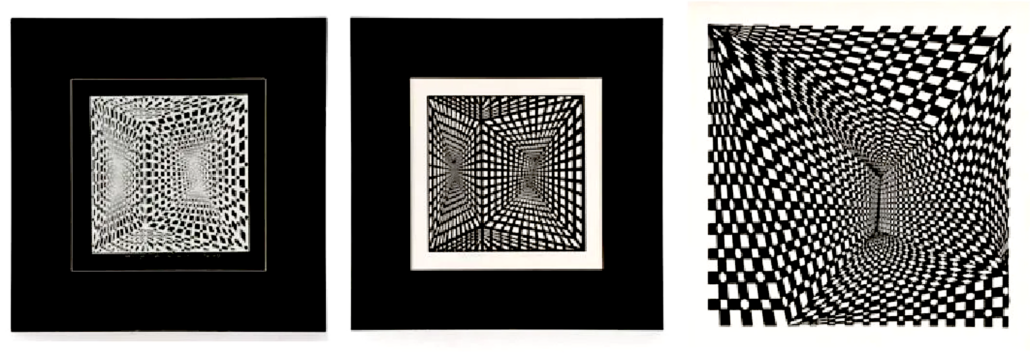
Today, his work is in more than 100 permanent collections. His serigraphs and screenprints exhibit the best traits of Op Art, conveying movement and challenging one’s vision and perception. Particularly striking are his black-and-white prints that have repeating square and dot patterning amid diminishing forms. A fine example is a trio of limited edition serigraphs — Concave Triad I, Convergent Inversions and Infinity — all from 1970, which made $1,100 plus the buyer’s premium in January 2017 at Ahlers & Ogletree Auction Gallery.
Ahlgren used abstracted elements and varied line thicknesses to create the illusion of motion and volume. On occasion, his artwork had some representational elements, such as the sky or water, but mostly these details are symbolic.
As with most of his serigraphs, Ahlgren used both straight lines and looped designs to create seemingly endless possibilities and upend one’s perception of reality and the infinite. This is perhaps most evident in a collection of four serigraphs that sold for $800 plus the buyer’s premium in March 2017 at Concept Art Gallery. The works in the quartet were titled Inversions, Convergent Inversions, Concave Triad I, and Facade III.
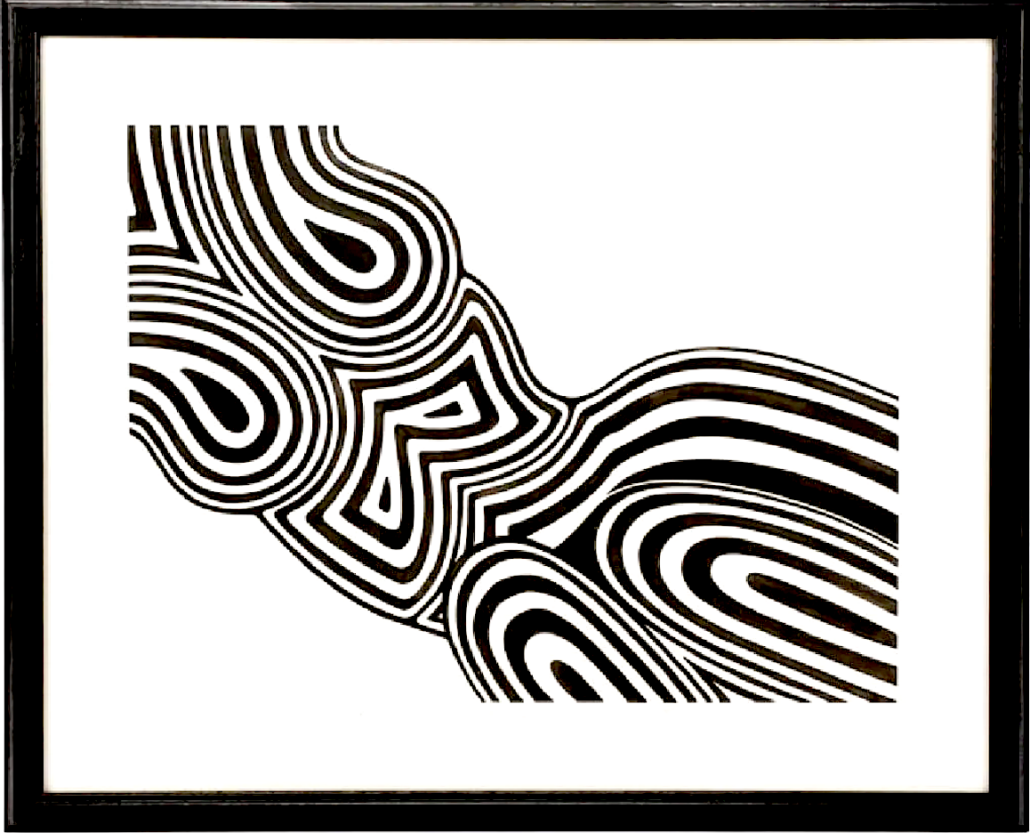
The odalisque, a type of female nude, is a popular motif in painting, and Ahlgren did several abstracted takes on the subject in his serigraphs. His 1971 work Odalisque, which depicts a woman’s form from her hip to her collarbone, earned $600 plus the buyer’s premium in January 2017 at Ahlers & Ogletree Auction Gallery.
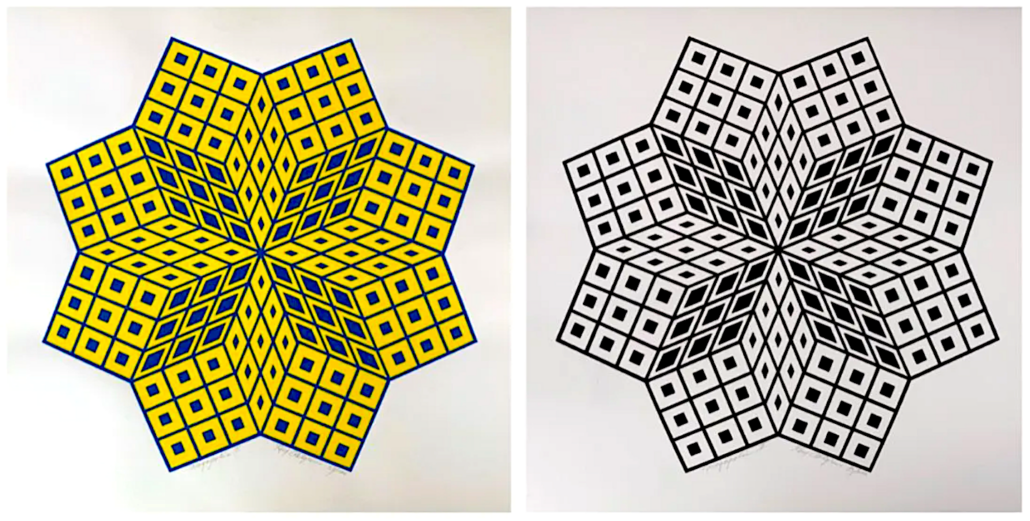
While most people think of Op Art works as being black-and-white, Ahlgren also created colored prints in the Op Art style. A pair of screenprints, Megapolis I and Megapolis II, show the difference between colored and black-and-white interpretations of the same motif. Both are equally appealing. Signed in pencil, titled and numbered, these two works realized $650 plus the buyer’s premium in August 2020 at Neue Auctions.
Ahlgren’s compositions were often painstakingly constructed by using mathematics in their design. “The precision, lines and coloring that Roy Ahlgren achieves in his Op Art prints create stunning depth and energy,” according to the website of Ro Gallery, which sold a signed and numbered 1970 color screenprint of his Composition Three for $450 plus the buyer’s premium in November 2019.

In his later years, Ahlgren was forced to change his artistic approach to painting natural landscapes. In a published catalogue raisonne of Ahlgren’s works, author Bob Hagle explains that years of inhaling solvent fumes that arose from the serigraphic process damaged the artist’s lungs. The chemicals created a serious respiratory issue, prompting Ahlgren to abandon serigraphs in favor of painting. Hagle stated, “He surrendered his geometric design work in favor of painting natural subjects — landforms, lakes, streams — on stretched canvas.”
Ahlgren is still best known for his Op Art works. While he never achieved the level of fame or the auction prices of Victor Vasarely or Bridget Riley, Ahlgren remains of interest to collectors today. His works typically sell at or just above the high estimate, but (for now, anyway) their prices are accessible to most buyers.


